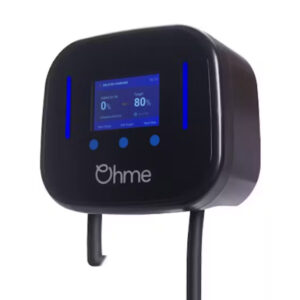Even though our company installs electric car charge points, we’ve wondered for years if Hydrogen would eventually be the car fuel of the future…
Hydrogen has been controversial ever since the tragedy of the Hindenburg airship. But people are now saying that Hydrogen is a low-carbon miracle which can power cars and homes.
But the reality lies in between.
Hydrogen is not a primary source of energy like oil or coal. It is best thought of as an energy carrier, like electricity, and as a means of storage, like a battery.
Hydrogen must be manufactured. Renewable energy and nuclear power could be used to separate water into oxygen and hydrogen, but this is still inefficient and expensive, although costs are falling.
Hydrogen can also be made from fossil fuels, but this emits a lot of pollution unless it is coupled with technologies that capture carbon.
Hydrogen is flammable and bulky compared with many fuels, and the laws of thermodynamics mean that converting primary energy into hydrogen and then hydrogen into usable power leads to waste.
Climate change though, is causing a wave of enthusiasm around Hydrogen. Amid the excitement, it is worth being clear about what hydrogen can and cannot do.
Japanese and South Korean firms are keen to sell cars using hydrogen fuel cells, but battery cars are roughly twice as energy efficient.
Some European countries hope to pipe hydrogen into homes, but heat pumps are more effective, and some pipes cannot handle the gas safely.
Some big energy firms want to use natural gas to make hydrogen without capturing the associated carbon effectively, but that does not eliminate emissions.
Instead, hydrogen can help in niche markets, involving complex chemical processes and high temperatures that are hard to achieve with electricity.
Hybrit, a Swedish consortium, sold the world’s first green steel using Hydrogen, and Hydrogen lorries can beat battery-powered rivals with faster refuelling, more room for cargo and a longer range.
Fuels derived from hydrogen may also be useful in aviation and shipping. Alstom is running hydrogen-powered trains on European tracks.
With so much money piling into hydrogen the list of uses for it may expand.
But based on the information learned (battery cars are twice as energy efficient as Hydrogen cars) electric cars and electric vehicle charging points are still the best choice for the environment.
…at least we can now stop wondering!


